J.S. McLean Centre for Indigenous + Canadian Art, Art Gallery of Ontario
About the individual or institution nominating:
1) Name and Surname of the individual submitting the nomination:
Georgiana Uhlyarik
1.2) Institution submitting the nomination:
Art Gallery of Ontario
About the practice, project or institution nominated:
2) Name of the institution nominated:
Art Gallery of Ontario
2.1) Name of the director of the institution nominated:
Stephan Jost
2.3) Name of the institution, practice or project nominated:
J.S. McLean Centre for Indigenous + Canadian Art, Art Gallery of Ontario
3) Argue in one sentence why you think the project you nominate is outstanding and could serve as an example for the entire community of modern and contemporary art museums.
The Indigenous + Canadian Art Department at the AGO is based on the nation-to-nation treaties on which Canada was founded, co-led by an Indigenous curator and a Canadian curator as a unique model of power- and resource-sharing, and as such it exemplifies its leadership in the museum’s commitment to act on the principles outlined in those treaties: mutual respect and sharing, non-interference, honest dealings, and actions that have integrity
3) Description of the practice or project. (max. 500 words)
Our curatorial model is based on the nation-to-nation treaties that served as the foundation of Canada. To acknowledge the history of broken treaties and long-standing exclusion of Indigenous voices from art museums, we privilege Indigenous art in our exhibitions, acquisitions, installation and programing. The notion of sharing land and power is at the heart of the treaty relationship, and the decision to have a co-led department working collaboratively in an equal relationship is meant to reflect this. Artists lead our thinking and inspire our way of telling stories from new perspectives. We seek to engage visitors with the familiar and the unfamiliar. We showcase contemporary Indigenous art with Canadian art according to the following guiding principles:
Indigenous-Led + Artist-Centred
Our installations are Indigenous-centred and thus non-chronological, setting aside the idea of linear time. Chronologies favour Eurocentric art histories that erase and exclude Indigenous understandings of art and time. Works by Indigenous and non-Indigenous artists in all media and from across time are placed alongside one another to open up multiple storylines, interpretations, and histories. We do not present one story or idea but instead encourage audiences to choose their own pathway and find entry points that are of interest to them, such as feminist art, spirituality, ecology, materiality, colonialism, portraiture, or Indigenous histories. Our acquisition priorities focus on Indigenous, women and artists of colour, many not yet represented in the collection.
Indigenous Languages
As a way to acknowledge the peoples of this land, texts are translated into Anishinaabemowin. It is exciting to experience the expansion of Anishinaabemowin into art discourse, and remarkable to witness the ways in which untranslatability illuminates differences between English, French, and Anishinaabe ways of being. Labels for the Inuit collection are in Inuktitut in honour of our large collection and our responsibility to the communities from which the works come. This deliberate strategy speaks to the critical importance of the revitalization of Indigenous languages, as well as allowing Anishinaabe and Inuit visitors to read about their art in their own language.
Land Acknowledgements and Landscapes
Landscapes have been part of the erasure of Indigenous presence on the land. Labels for exhibited landscape artwork include the First Nation(s) whose land it is, the treaties that govern it, and if the land is unceded. These land acknowledgements are acts of sovereignty.
Two-Pronged Approach to Indigenous Art
Indigenous art is exhibited alongside Canadian and contemporary art, as well as on its own. This allows for the development of new art histories and the positing of new questions that may never be broached in a cross-cultural space.
Treaty Obligations
Our department honours these treaty obligations by asserting that First Nations hold title to their lands, and that the organization will act on the principles outlined in those treaties.
In 2023, we published Moving the Museum: Indigenous + Canadian Art at the AGO inviting poets, storytellers and thinkers to reflect on our unique museological approach and offering a model for shared vision for the future.
4) Images:
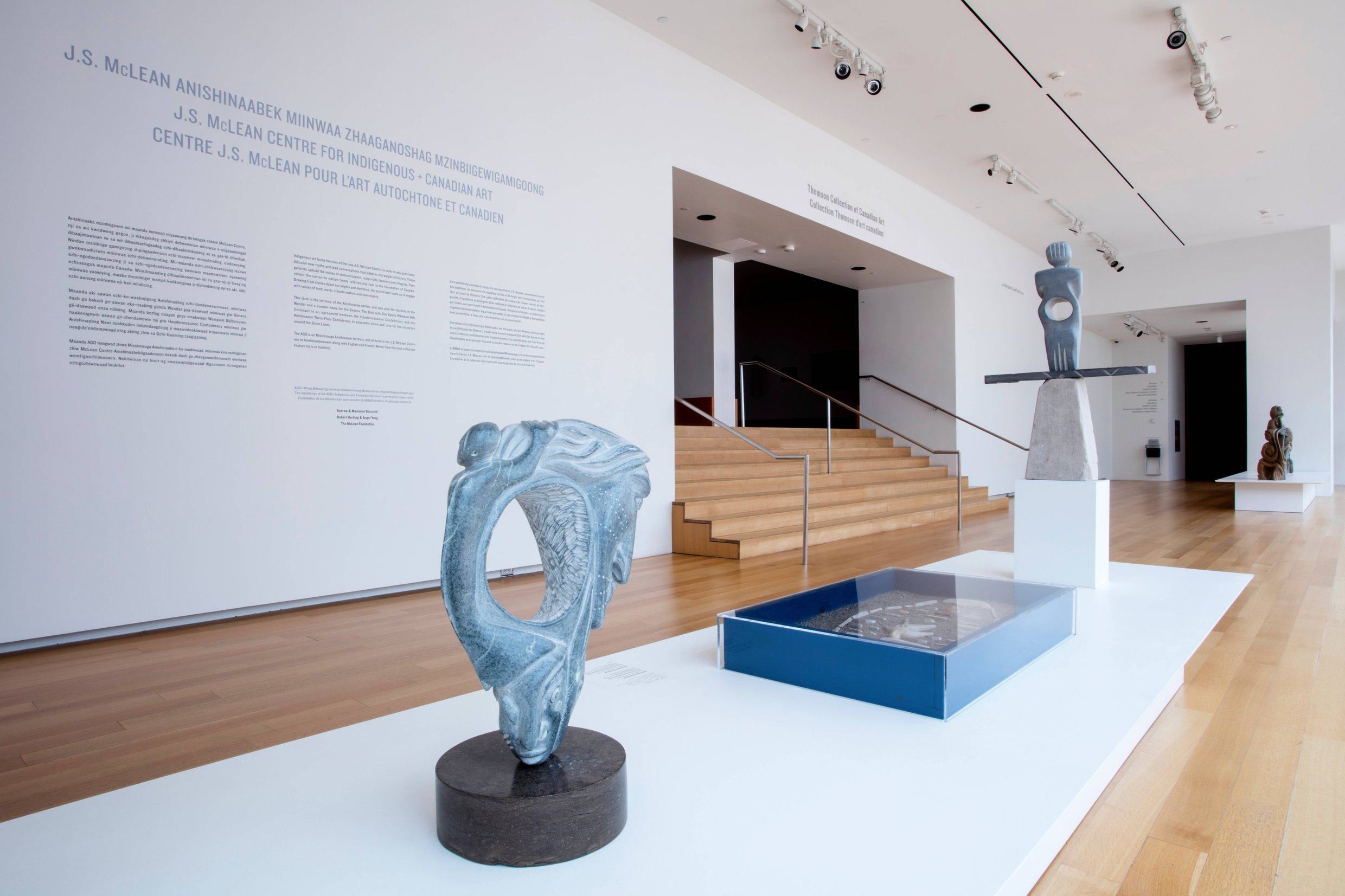
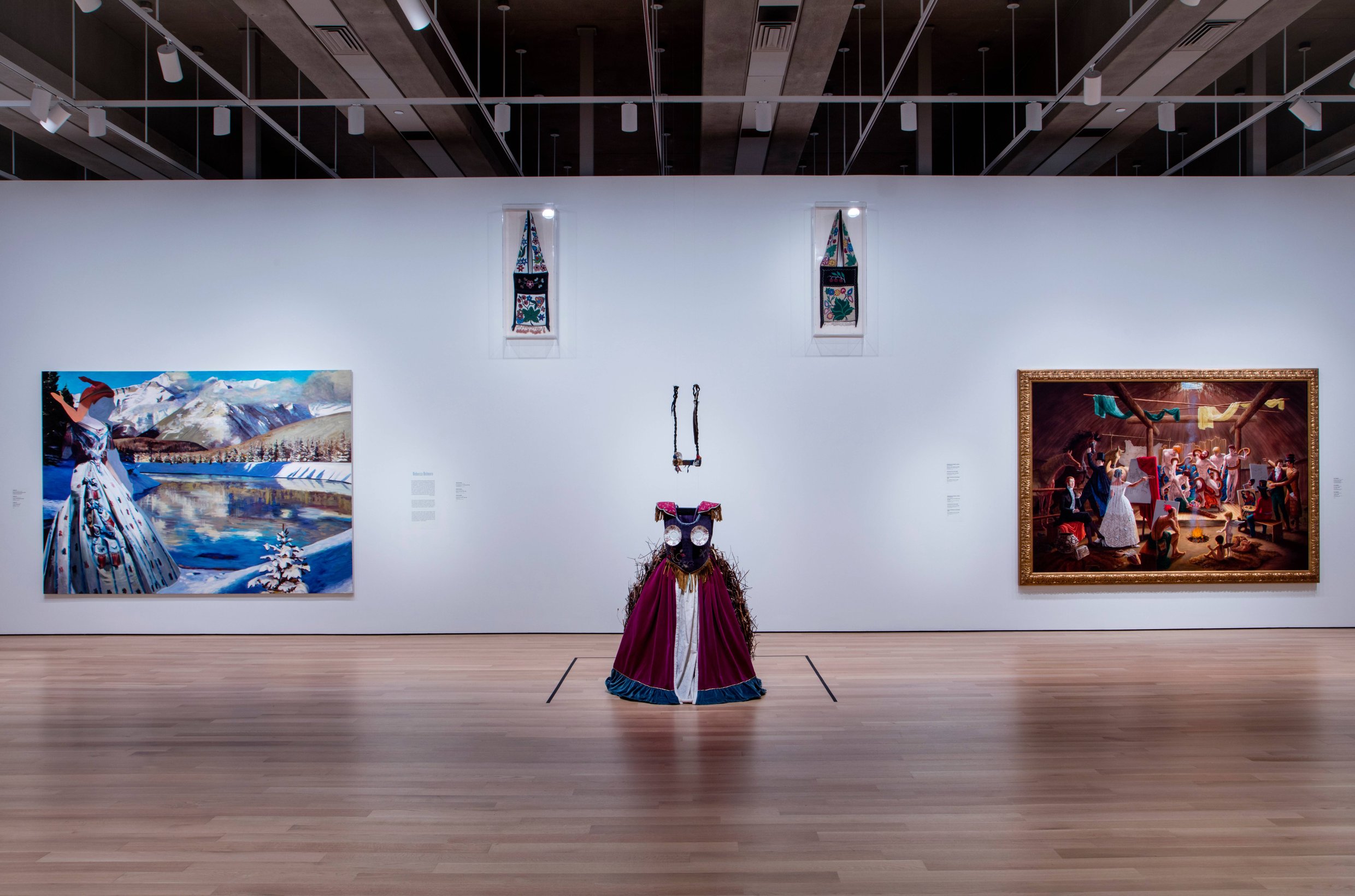
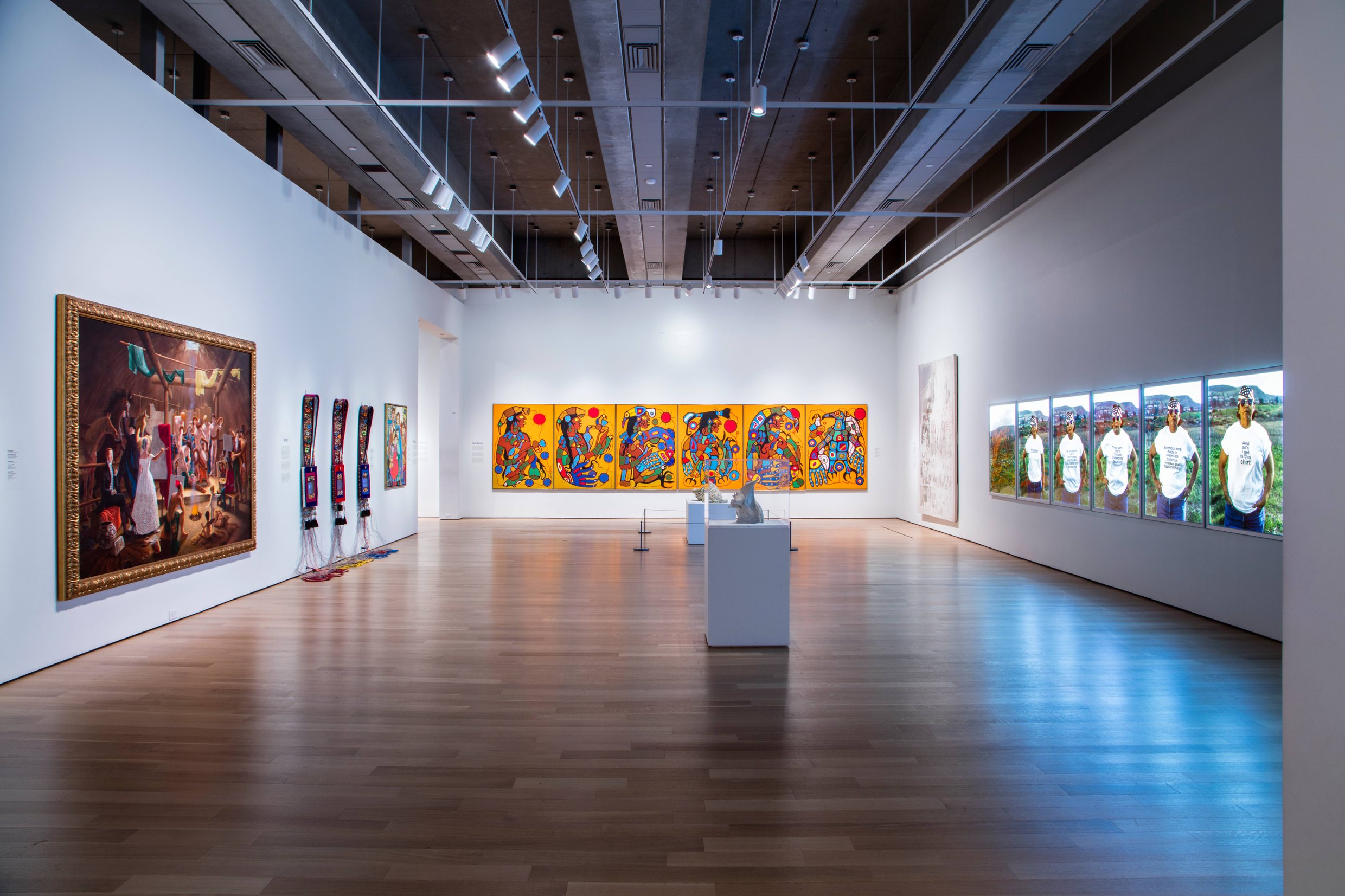
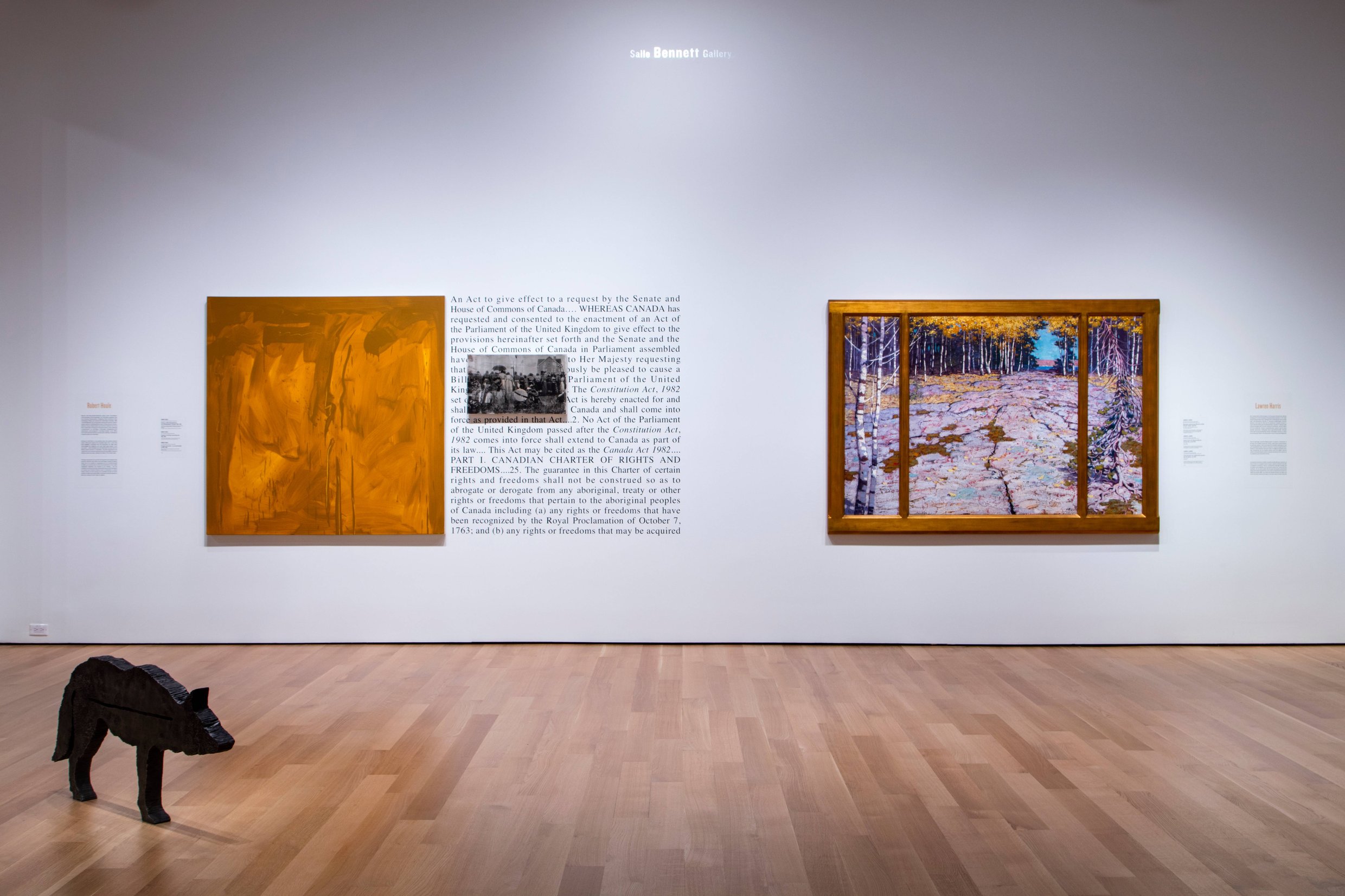
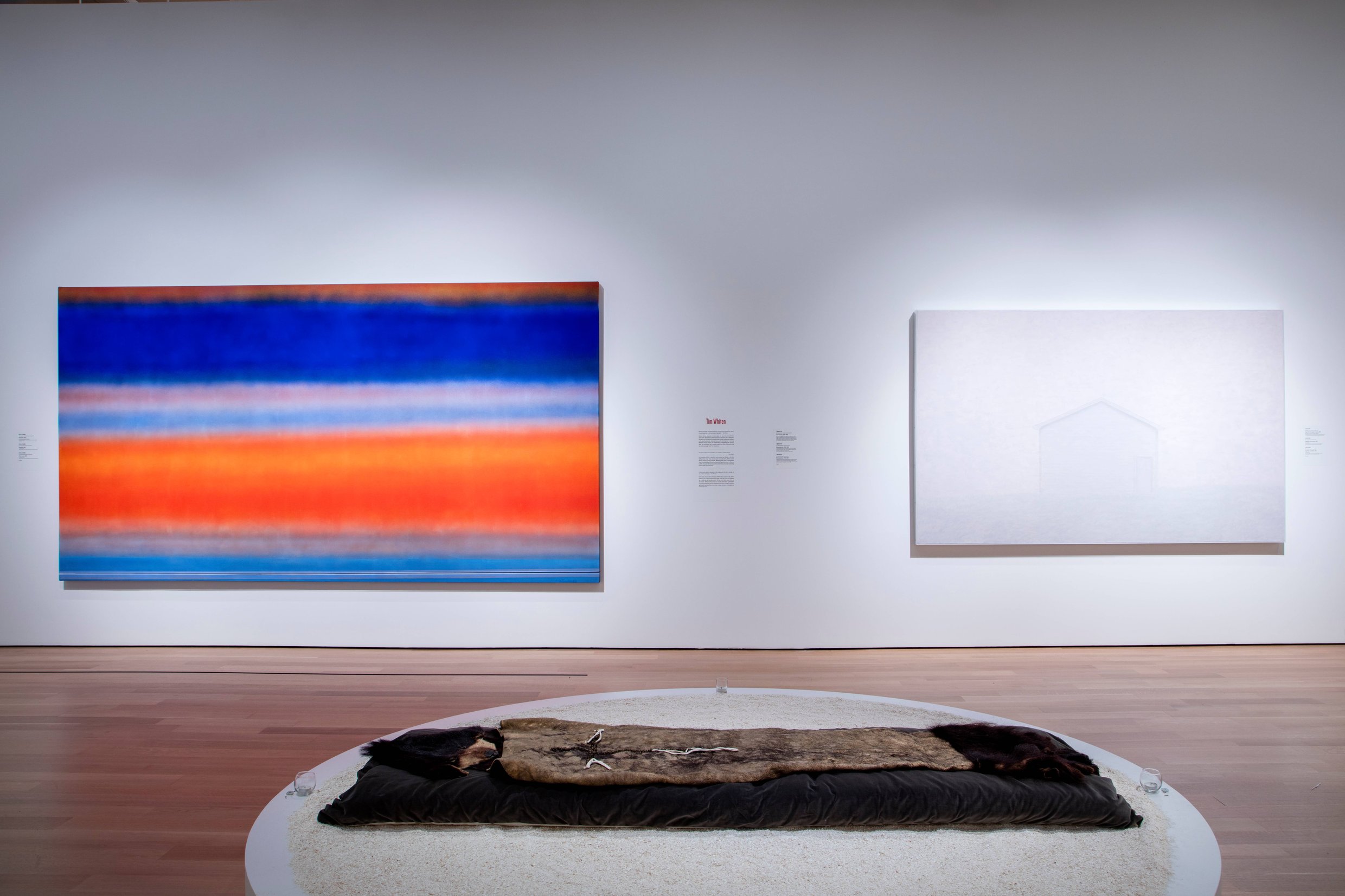
Credit and caption Image 4: Installation view of Ki | Land at the AGO’s J.S. McLean Centre for Indigenous + Canadian Art in 2018. Left to right: John McEwen, The Distinctive Line between One Subject and Another, 1980; Robert Houle, Premises for Self Rule: Constitution Act, 1982, 1994; Lawren S. Harris, Autumn Forest with Glaciated Bedrock, Georgian Bay, c. 1914.
Credit and caption Image 5: Installation view Aanzinaagotoowin | Transformation
5) Provide links to the institution website as relevant support material: